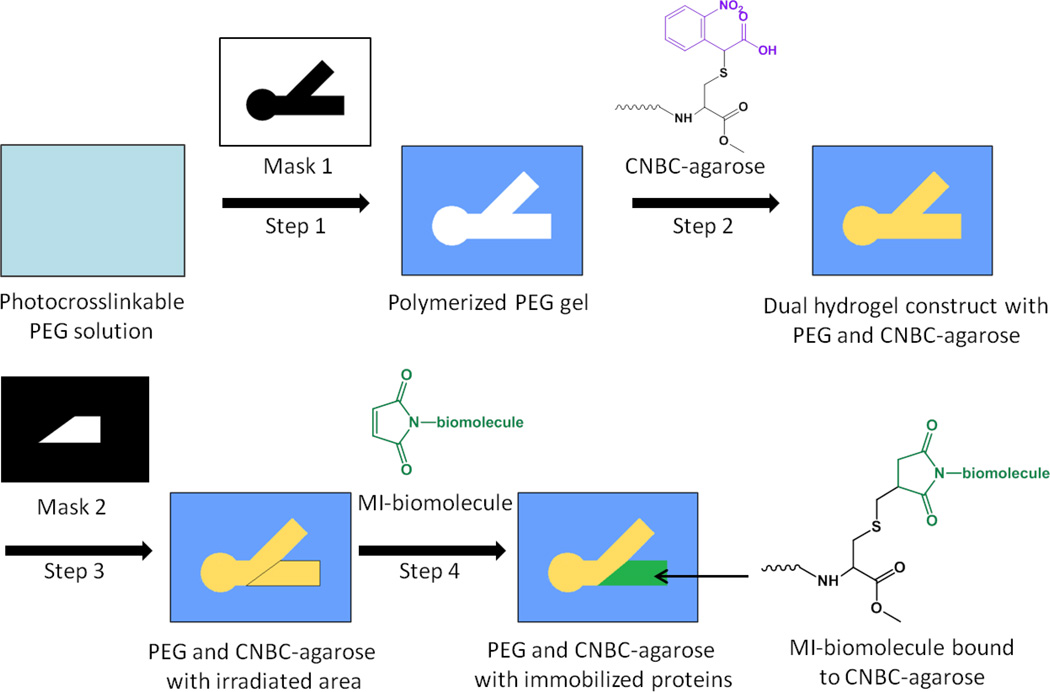Figure 1.
Fabrication scheme for dual hydrogel constructs with 1% α-carboxy-2-nitrobenzyl cysteine agarose (CNBC-agarose) and immobilized cues. Step 1: A cell culture insert is filled with photocrosslinkable PEG solution. Using Mask 1, PEG solution is crosslinked via UV irradiation and uncrosslinked PEG is removed. Step 2: The PEG molds are filled with CNBC-agarose solution and crosslinked at 4° C. The photocleavable moiety on CNBC-agarose (purple) cages the thiol on the cysteine. Step 3: After gelation, CNBC-agarose is irradiated with UV using Mask 2. Irradiation uncages the thiol moiety on CNBC-agarose, providing a binding site for maleimide-activated (MI) biomolecules. Step 4: Inserts are soaked in MI-biomolecule solution tagged with fluorescent markers, resulting in a region of immobilized MI-biomolecules in CNBC-agarose.

